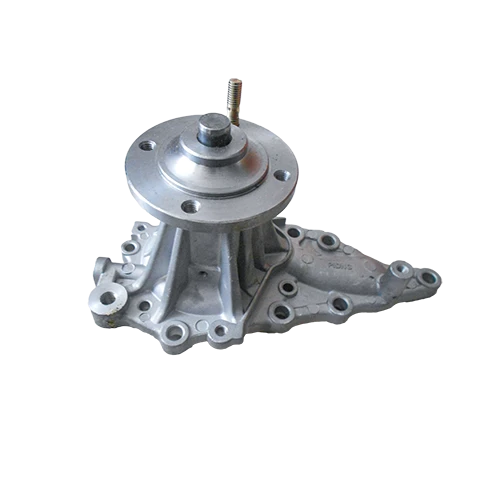Mobile:+86-311-808-126-83
Email:info@ydcastings.com
Advancements in Aluminium Alloy Investment Casting Techniques for Precision Manufacturing
Aluminium Alloy Investment Casting An Overview
Aluminium alloy investment casting is a sophisticated manufacturing process that combines the versatility of aluminium with the intricate detail available through investment casting techniques. This method is particularly esteemed in various industries for producing complex, high-precision components that meet stringent specifications. As lightweight and corrosion-resistant materials become increasingly vital in modern applications, aluminium alloys stand out as a popular choice, driving the growth of investment casting in several sectors.
The Investment Casting Process
Investment casting, often referred to as lost-wax casting, is a process that involves several key stages. Initially, a wax pattern is created to match the desired shape of the final part. This wax pattern is coated with a ceramic shell, forming a mold. Once the shell is hardened, the wax is melted and drained away, leaving a hollow cavity that mirrors the original pattern. The next stage involves pouring molten aluminium alloy into the ceramic mold. After the alloy cools and solidifies, the mold is broken away, revealing the finished component. This process allows for exceptional accuracy and a superior surface finish compared to traditional casting methods.
Benefits of Aluminium Alloys
Aluminium alloys offer several advantages that make them a preferred choice in investment casting. Primarily, these alloys are lightweight, contributing to reduced energy consumption and enhanced performance in applications like aerospace, automotive, and marine industries. Additionally, aluminium exhibits excellent corrosion resistance, which is crucial for parts exposed to harsh environments. The material also demonstrates good thermal and electrical conductivity, making it suitable for various electrical and heat exchange applications.
Furthermore, aluminium alloys can achieve a wide range of mechanical properties through various alloying elements and heat treatment processes. From high strength-to-weight ratios to improved ductility, manufacturers can customize the material properties to meet specific design requirements, ensuring that components perform effectively under demanding conditions.
Applications in Various Industries
aluminium alloy investment casting

The versatility of aluminium alloy investment casting allows it to find applications across multiple industries. In the aerospace sector, parts such as engine components, housings, and structural elements benefit from the lightweight and high-strength nature of aluminium alloys. These components contribute to the overall efficiency of aircraft, reducing fuel consumption and enhancing performance.
In the automotive industry, aluminium castings are utilized in engine blocks, transmission cases, and various chassis components. The shift towards lightweight materials is vital in automotive design to improve fuel efficiency and reduce emissions. As electric vehicles gain traction, aluminium’s recyclability and performance characteristics become more relevant, further fuelling its demand.
Marine applications also leverage aluminium alloys due to their resistance to seawater corrosion. Components like propellers, hull fittings, and various structural parts benefit from the material’s strength and weight advantages, which are essential in enhancing boat performance and longevity.
Challenges and Considerations
While aluminium alloy investment casting offers numerous benefits, it does come with challenges. The initial setup costs can be higher compared to other casting methods, particularly for smaller production runs. Additionally, the complexity of the process demands skilled labor and strict quality control measures to ensure consistency and reduce defects.
Moreover, the choice of alloy materials must be carefully considered. Not all aluminium alloys are suitable for investment casting, and selecting the right alloy is crucial for achieving the desired mechanical properties and performance characteristics in the final product.
Conclusion
Aluminium alloy investment casting represents a pivotal manufacturing process that combines the advantages of aluminium with the precision of casting technology. Its applications across diverse industries underscore its significance in producing lightweight, durable components that adhere to stringent quality and performance standards. As technological advances continue to enhance casting techniques and materials, the future of aluminium alloy investment casting looks promising, with ongoing innovations set to expand its reach and effectiveness further. By addressing its challenges and capitalizing on its benefits, manufacturers can leverage this process to meet the growing demands of contemporary engineering and design.
-
Impeller Technology That Powers Precision in Pump SystemsNewsMay.22,2025
-
Valve Durability Begins with Quality Cast Iron ComponentsNewsMay.22,2025
-
Performance Cooling with Advanced Automobile Water Pump SolutionsNewsMay.22,2025
-
How Motor Housing and Oil Pans Shape Engine PerformanceNewsMay.22,2025
-
How Metal Castings Drive Modern Manufacturing EfficiencyNewsMay.22,2025
-
Exploring the Engineering Behind Valve Body CastingsNewsMay.22,2025











